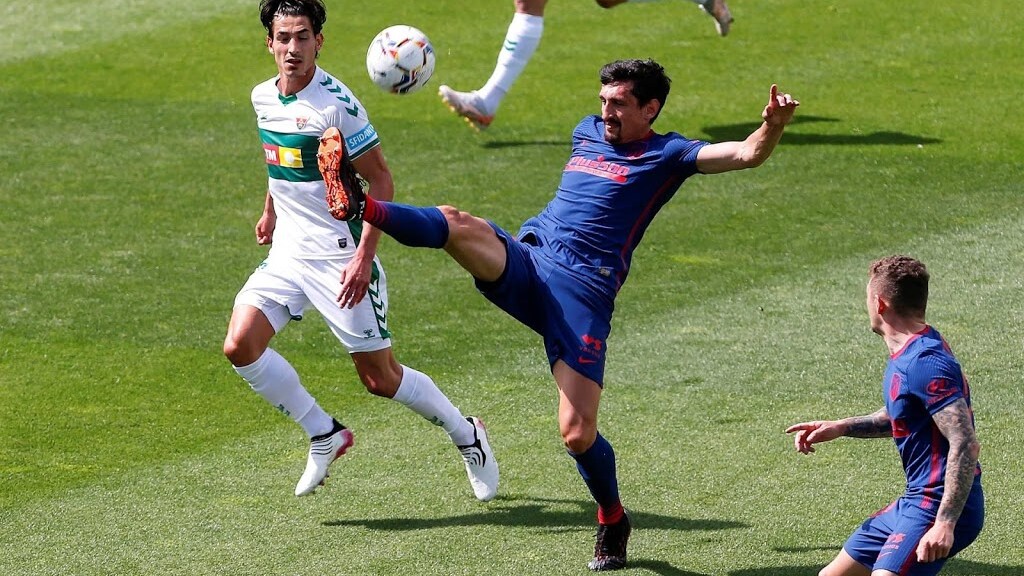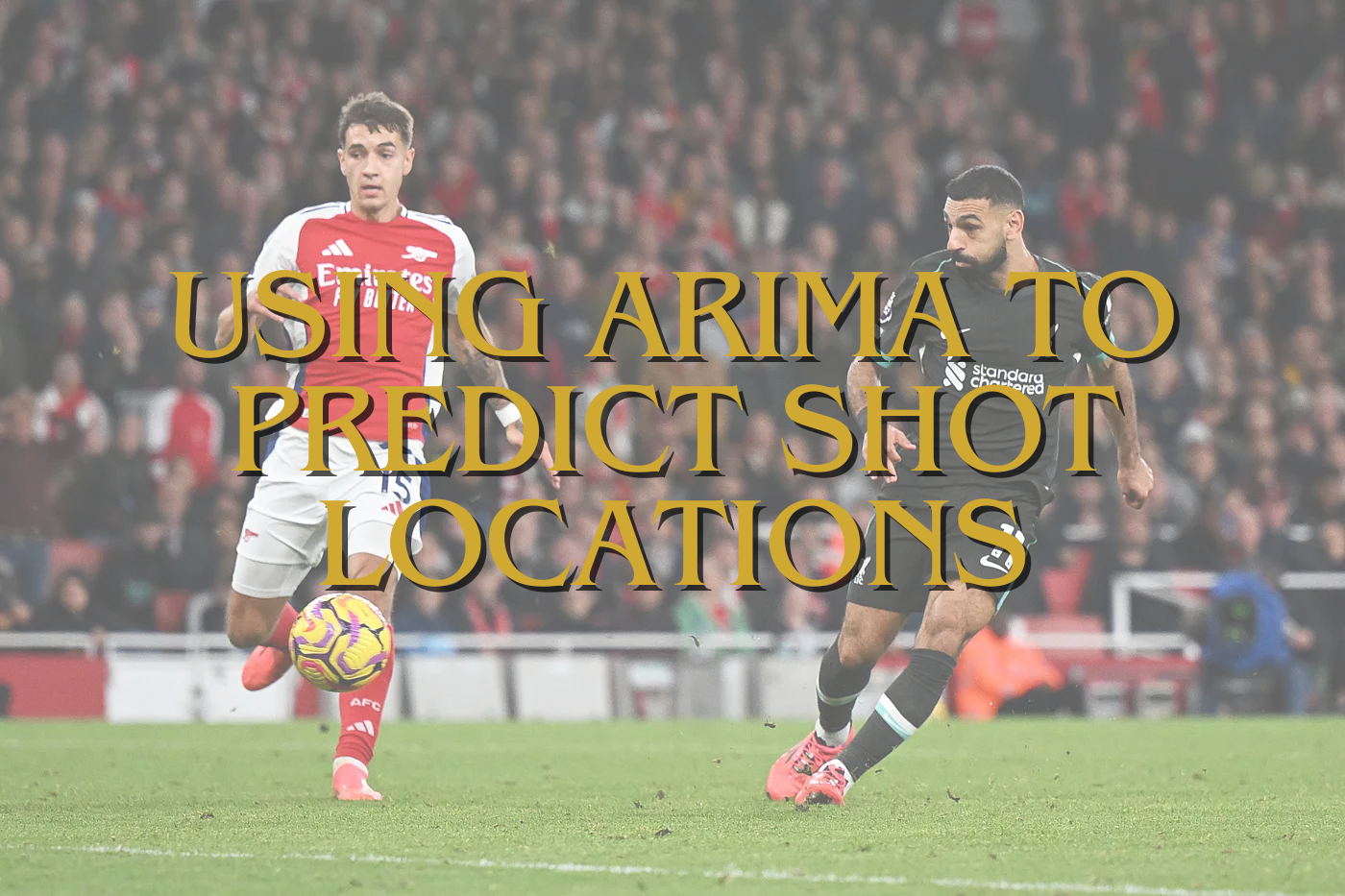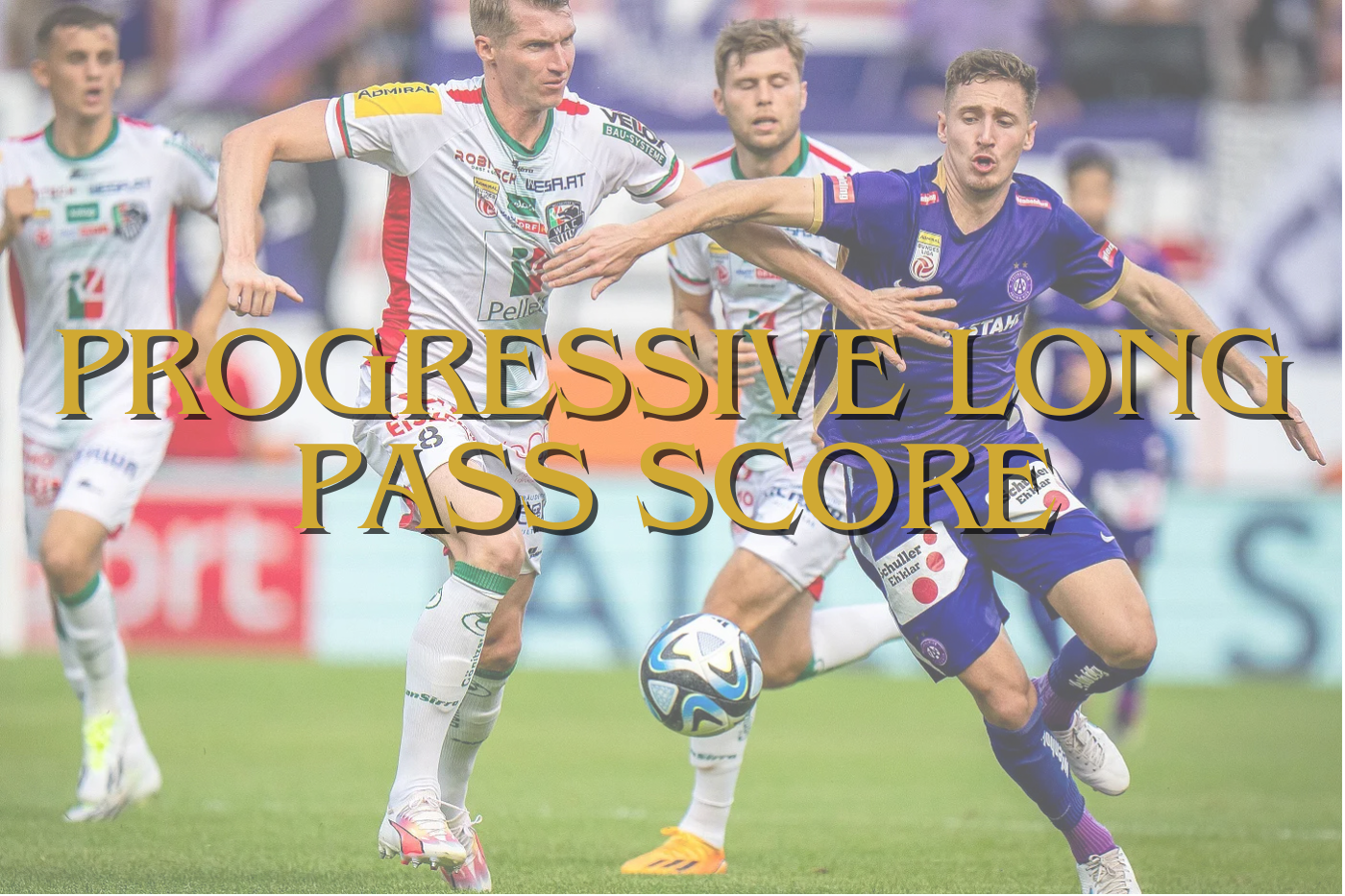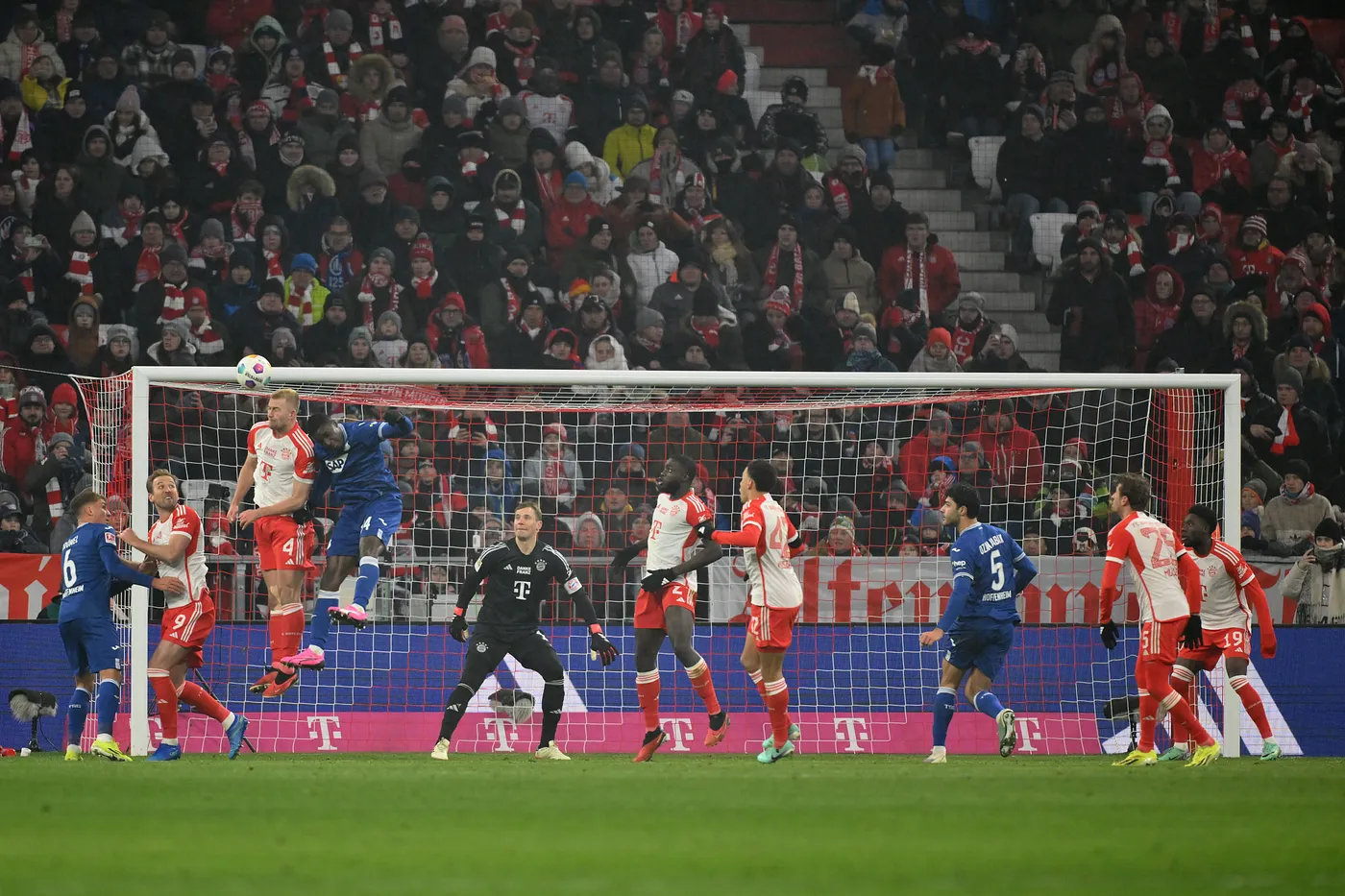Talking to some friend the other day and I was asked what I liked the most about football – the actual moment I could enjoy of a team. Many assume that I’m a very offensive-minded coach and analyst, but that’s not something I get the most satisfaction from.
In this article I will focus on something that a find very interesting: position-oriented marking in a 4-4-2. The reason why I’m writing this is because of the perception that defending with an unit is a very tough thing to do. In this analysis I will attempt the explain the basics using visualisations and explain the roles of the players in this specific 4-4-2.
The compact 4-4-2

In the image above you see the formation of two teams. The blue team lines up in a 4-4-2 formation and the orange formation lines up in a 4-2-3-1 team. In this analysis I will focus on the blue team. First thing that you might notice is that the whole defensive line and midfield line are flat – this is something that is trained and coached, because it’s important for these lines to act as unit, hence the two lines of four.
The second thing is that the two strikers play in the same line or in the central zones, as the two central midfielders and the two central midfielder. This is done to always keep the balance horizontally and vertically – making sure that you are not overloaded in these area.
Obviously, these are starting positions for the teams, but a vital part of the 4-4-2 is that without the ball, the 4-4-2 remains deep and will act as a compact unit of two lines of four plus their strikers – which will make the type of zonal marking easier.
Position-oriented zonal marking
Before I embark on the specifics of this type of zonal marking in my case study, I will have a look at what position-oriented zonal marking is. According to the wonderful people at Spielverlagerung it is as follows: “In position-oriented zonal marking, the player’s reference point is his “teammates”. The team simply operates in a closed block. This ‘block’ is nothing but a formation, in which the respective positions are clearly defined and a player “covers” his own position. The term position marking could also be used.”
It means that if the a player of the opposition is able to receive a pass, the closest player will go their and mark that certain area. As a consquence – in reference to the teammates – the other playes will move in that particular direction to, because they are a unit. In the case of our team, it means two lines of four in that particular type of zonal marking.
Zonal marking with 4-4-2

In the image above you see the pitch lined up when the orange team has the ball. In this scenaro either one of the central defenders has the ball and they try to progress on the pitch. The full backs remain wide, as do the wide-midfielder/wingers – and these are important to keep looking at.
The blue team defends and their formation changes slightly in position. The four-man defence and four-man midfield remain, while the two strikers assume a higher position on the pitch, against the double pivot employed by the opposition. What’s important that the compactness of those two lines of four remains and that they remain to defend on a line. The full-backs and wide-midfielder seem to in an unnatural position, but in this case, were they to progress, it would ruin the compact defensive set-up with two defensive lines.

In the image above you see a situation wherein the attacking side moves forward. The sole strikers plays between the lines, but the attacking midfield trio are playing in the central zones and half spaces. The left wide-midfielder/winger leaves the half space for the wide space, and in doing so progresses down the line. In reaction to that the right wide midfielder of the blue team goes closer to him, as the winger is entering his zone.
There are two things that were quite interesting in observing this kind of zonal marking. First of all, not the whole team participates in this zonal marking. The two strikers have a different scheme of marking – which I won’t go into here – and are not involved with position-oriented zonal marking. Their position isn’t compact either, so there is more space between them en the midfield-four.
The second things that’s interesting here is that when the right-wide midfielder goes to defend his zone and mark that zone, the whole defensive line will shift in the way it’s teammate does. So he goes up and right, which as a consequence sees seven other players do the same thing, therefore they move like a unit.
Function of the strikers

So as mention above, the two strikers do not interact with the zonal marking scheme. What I did find what was interesting, was how they were used in case of a transition. The zonal marking often proved to be successful and from that position, the blue team could get the ball and get it forward.
Now, the ball would be immediately played long towards either striker, but they were not the classical strikers you might expect in a 4-4-2. They both left their positions in the central zone and occupied the half-space zone. This allowed them to occupy positions to force the opposition to chose a defensive action, while the long ball was played from the compact defensive lines.







